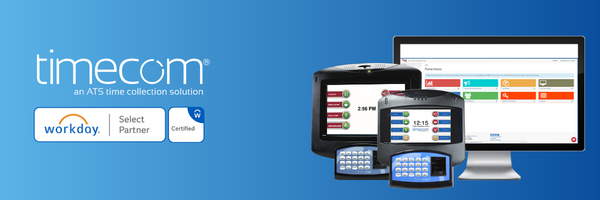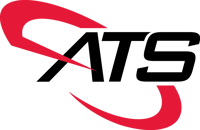Legal compliance is a costly and time-consuming effort. Yet, it’s more costly if not done well. Your company can improve its compliance management, and lower its costs, with a Workday time clock system that integrates with Workday Time Tracking.
With TimeCom, ATS offers you a cloud-based time clock system that works with your Workday HCM environment to automate compliance with local and federal labor laws by:
- Running an accurate payroll system with up-to-date information, which reduces the risk of payroll errors and disputes.
- Provides Workday with the actual work hours collected at the ATS time clock for better schedule and time management, this benefits employees so they don’t feel overworked.
reliable time tracking & data collection are required to process payroll that avoids compliance risk
Underpaying employees can lead to expensive wage-and-hour cases that cost companies millions in back-pay, interest, and penalties. Labor suits also cost companies in loss of brand value and loyalty when trying to retain and recruit new employees.
Companies can minimize the risk of underpaying employees by having a flexible time clock that collects all the data needed to run an accurate workday payroll process. With complete and accurate data, the payroll process runs in full compliance with human capital management contracts and applicable legal requirements.
For example, in the TimeCom system, the time clocks can be configured to:
- Identify which hours should be earning shift differential, overtime, or premium pay.
- Allow employees working multiple roles at different pay rates to specify the department or role when clocking in.
- Capture the geographic location of the time clock that was punched so the appropriate payroll and labor laws for that jurisdiction are applied to those hours when calculating payroll.
- Collect additional information that may be needed to improve payroll accuracy and compliance management. For example, users who earn tips can be prompted to enter how much they earned that shift when clocking out.
While a compliant payroll makes finance, legal and outside regulators happy, it also makes employees and managers happy. Employees appreciate getting paid accurately. Improved data collection at the time clock and an automated delivery of the data into Workday also speeds up the payroll validation process. A more automated process gives managers more time to review and approve their team payroll information. This saves time, which the managers appreciate, and it further lowers the risk of mis-paying employees.
enforce schedule compliance at the workday time clock
Using business rules when creating schedules in Workday helps managers avoid violating local labor laws, such as scheduling an employee with:
- too many work hours within a specified time period.
- a shift without providing enough notice.
- too few hours so the employee falls below minimum shift requirements.
However, companies are held responsible for hours worked when assessing legal compliance and not what’s scheduled. So even if an employee wasn’t over-scheduled, their actual work hours may tell a different story. If they show an employee worked more hours than legally permissible, that’s evidence the employer is noncompliant with labor laws. When Workday has the real time tracking data from the time clock, managers can plan future schedules with the most accurate time and attendance information available.

enforcing workday schedules at the time clock
The right time clock has a strong role to play when enforcing compliant work schedules. For example, TimeCom time clock integration with workday can prohibit an employee from clocking in if they are not scheduled, which helps you avoid inadvertently scheduling noncompliance.
They also help you from falling out of compliance with payroll or scheduling laws by limiting scheduled employees from clocking in any earlier than seven minutes before their shift starts. This limitation saves you from overpaying for labor costs and lowers the risk that an employee clocking in too early will lead to too many hours worked, even though scheduled properly.
enforcing break time at the time clock
Complying with state meal and break laws is another employee time-consuming  challenge. Ensuring employees take breaks is also a health boundary for both hourly and management employees.
challenge. Ensuring employees take breaks is also a health boundary for both hourly and management employees.
The TimeCom time clock software includes business rules that enforce meal and rest breaks and are configurable to meet the appropriate state law. The TimeCom time tracking system can also:
- Tag each punch in/out pair as a meal or break time for easy reporting.
- Configure the Workday-compatible time clock to allow the early punch-in from a break but collect an attestation from the employee that they understand they’re still on an unpaid break until the full break time has passed.
Here some resources that provide information on state break laws:
automated time tracking in workday improves compliance records
The quality of your compliance documentation is critical during government audits or private labor lawsuits. Any lack of complete reporting and documentation is often construed against the employer.
Data collected by ATS time clocks and the TimeCom system is encrypted and securely stored on data protected servers. You can run reports on that data, from TimeCom or Workday, to verify your compliance with labor laws.
Managers and HR staff can also easily run reports on employee attendance and break time to learn of potential issues before they escalate into serious time and absence issues or compliance issues.
additional timecom compliance services for workday time tracking
You can configure custom attestation requirements to get collected at the time clock, which provides unlimited opportunities to improve compliance documentation. Two common ways companies take advantage of this are by collecting an attestation:
- at each punch, confirming whether the punch is for a meal or rest break.
- at shift end punch, asking whether the employee witnessed a workplace accident that day. This information is critical for keeping records whether, when, and who witnessed workplace accidents that show compliance with OSHA reporting requirements.

The TimeCom system also enables you to use the integrated Workday time clock for much more than tracking time. The two-way data sharing between the two systems allows employees to perform certain tasks at the ATS timeclock that also comply with labor laws. Employees can view their:
- total accrued hours worked
- recent time clock punches
- schedule
- time off accruals balances
They can also initiate a request for time off right at the time clock.
Having a time clock that also functions as an employee self-service device gives employees more control over their schedule and pay management. It also provides them the opportunity to review and correct information before payroll runs, further reducing the risk of under-paying employees.
integrate with timecom for a complete workday time clock solution
TimeCom is a Workday-certified solution that offers you a comprehensive, cloud-based, attendance data collection solution. Purpose-built to integrate with Workday, TimeCom provides you with a host of tools to lower costs while improving compliance.
In addition to the time clocks, the TimeCom system includes:
- A middleware layer, operating on the ATS servers, that simplifies time clock and data management, protecting data integrity.
- A web-based management portal that gives the IT team direct visibility into the operational and integration status of every ATS time clock a company has deployed.
Schedule a live TimeCom demo today to see how integrating it with Workday can help make your compliance management program stress-free, and other ways it can save money and improve your workforce management.





 challenge. Ensuring employees take breaks is also a health boundary for both hourly and
challenge. Ensuring employees take breaks is also a health boundary for both hourly and 
